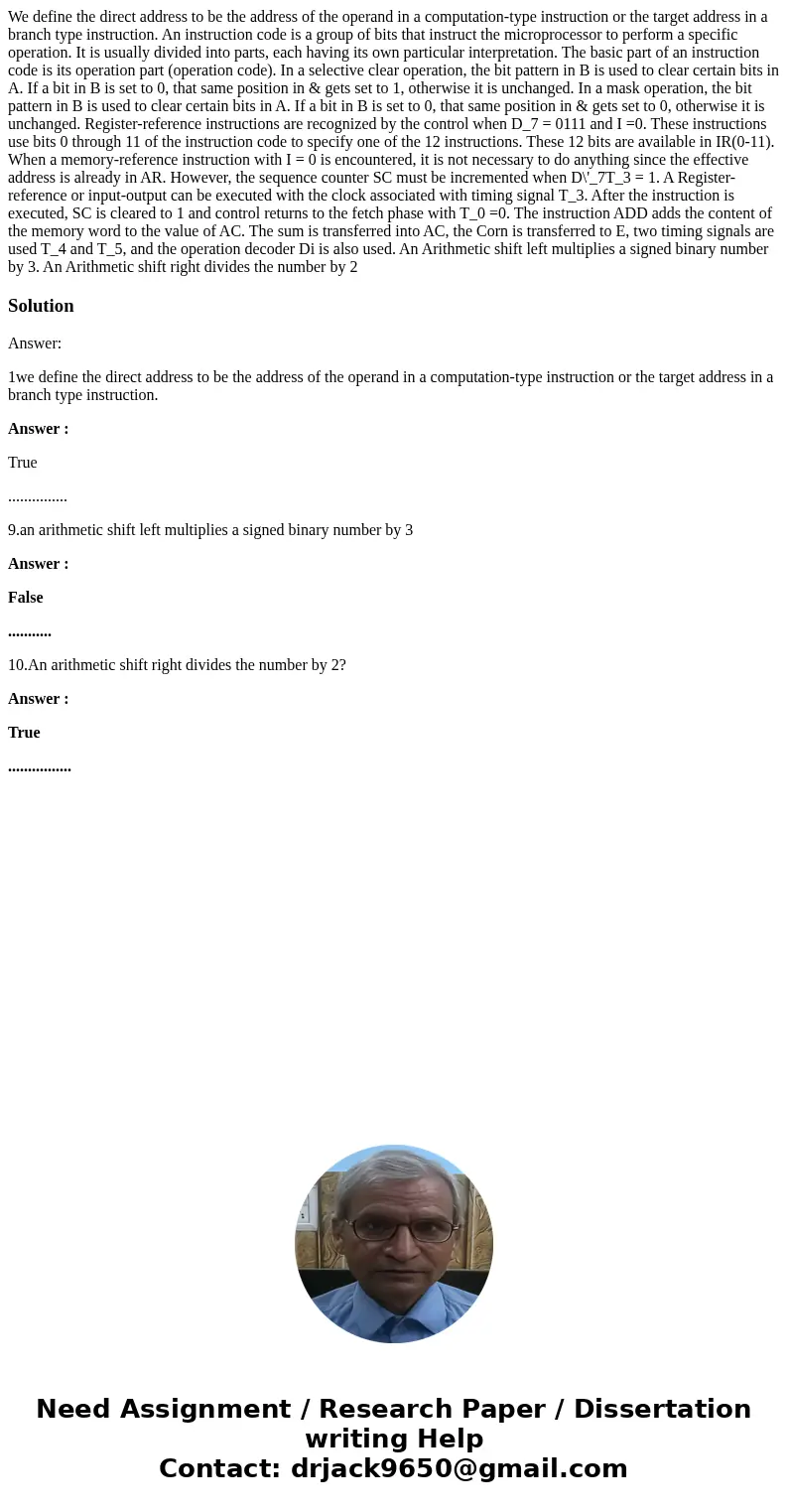We define the direct address to be the address of the operan
We define the direct address to be the address of the operand in a computation-type instruction or the target address in a branch type instruction. An instruction code is a group of bits that instruct the microprocessor to perform a specific operation. It is usually divided into parts, each having its own particular interpretation. The basic part of an instruction code is its operation part (operation code). In a selective clear operation, the bit pattern in B is used to clear certain bits in A. If a bit in B is set to 0, that same position in & gets set to 1, otherwise it is unchanged. In a mask operation, the bit pattern in B is used to clear certain bits in A. If a bit in B is set to 0, that same position in & gets set to 0, otherwise it is unchanged. Register-reference instructions are recognized by the control when D_7 = 0111 and I =0. These instructions use bits 0 through 11 of the instruction code to specify one of the 12 instructions. These 12 bits are available in IR(0-11). When a memory-reference instruction with I = 0 is encountered, it is not necessary to do anything since the effective address is already in AR. However, the sequence counter SC must be incremented when D\'_7T_3 = 1. A Register-reference or input-output can be executed with the clock associated with timing signal T_3. After the instruction is executed, SC is cleared to 1 and control returns to the fetch phase with T_0 =0. The instruction ADD adds the content of the memory word to the value of AC. The sum is transferred into AC, the Corn is transferred to E, two timing signals are used T_4 and T_5, and the operation decoder Di is also used. An Arithmetic shift left multiplies a signed binary number by 3. An Arithmetic shift right divides the number by 2 
Solution
Answer:
1we define the direct address to be the address of the operand in a computation-type instruction or the target address in a branch type instruction.
Answer :
True
...............
9.an arithmetic shift left multiplies a signed binary number by 3
Answer :
False
...........
10.An arithmetic shift right divides the number by 2?
Answer :
True
................

 Homework Sourse
Homework Sourse